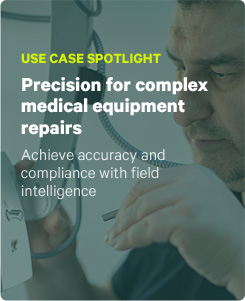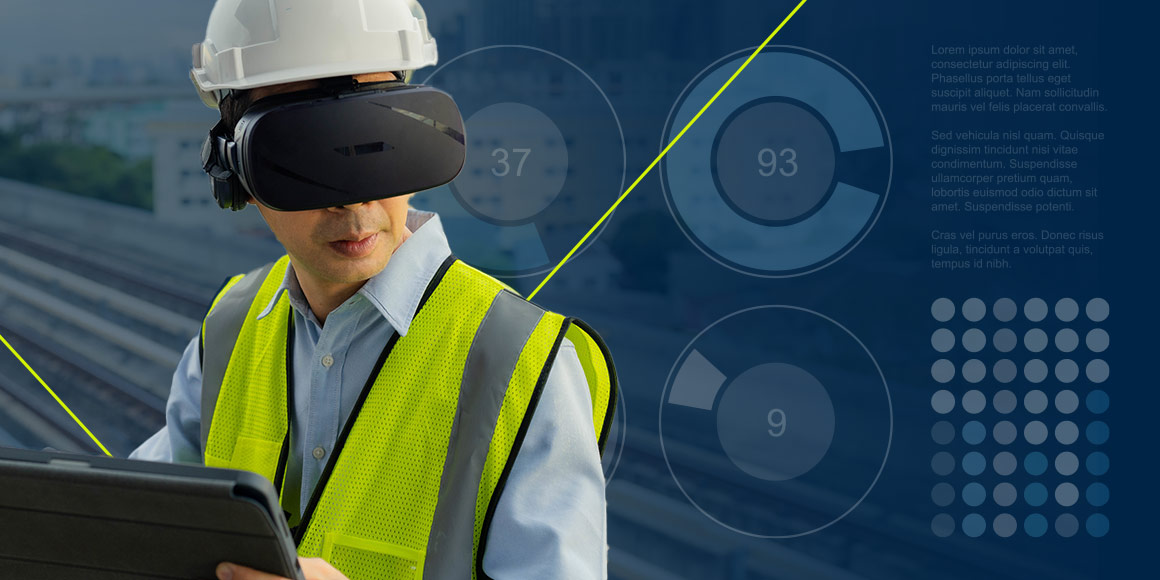At a glance:
- Complex landscape: Oil and gas operations managers balance sustainability, regulations, and rapid technological change in a dynamic environment.
- Fragmented systems: Disconnected digital tools hinder decision-making, compromise safety, and increase the pressure on operations managers.
- Integrated approach: Modular platforms and strategic partnerships help bridge technology gaps, improving efficiency, decision-making, and safety.
Field service leaders must navigate many challenges and opportunities in today’s dynamic oil and gas environment, including geopolitical shifts, macroeconomic fluctuations, regulatory changes, and the rapid emergence of new technologies. For them, thriving in this complex landscape means balancing financial discipline and pursuing sustainable, profitable energy solutions. Blending proven best practices with innovative approaches is critical for them to stay competitive and resilient in the rapidly evolving market.
In this high-pressure environment, we meet Mike, an operations manager whose daily tasks go beyond maintaining smooth operations. He is responsible for keeping his team aligned as they navigate the ever-changing oil & gas landscape.
To that end, Mike, like many in his industry, is confronted with a disjointed internal digital infrastructure. His systems are not fully integrated, resulting in communication breakdowns and inefficiencies. There are quick solutions, but finding a comprehensive, future-focused system capable of managing an oil and gas operation’s full complexity remains daunting. This fragmented digital environment gets in the way of real-time decision-making and compromises essential safety protocols, placing considerable weight on Mike’s every call.
To further complicate matters, Mike’s company has recently incorporated several new technologies into their operations. This initiative adds another layer to a complex digital framework, challenging Mike to manage the current technological assortment and effectively integrate these new additions.
Navigating the digital frontier: integration hurdles in a digital ecosystem in oil & gas
In Mike’s world, advanced technologies like drones, IoT, AI, and machine learning are becoming part of everyday life. Companies like BP harness artificial intelligence and the Internet of Things for predictive maintenance, evaluating the condition of their operational equipment to minimize failures and maximize productivity. Ovintiv is exploring drones for pipeline monitoring and equipment surveys to reduce human error and safety risks.
For Mike, drones are of particular interest. The models he has in mind can capture high-resolution imagery for detailed site analysis, use thermal imaging to identify potential hazards, and read topographical data for safer planning. Some can even overlay augmented reality onto video feeds for better equipment evaluations in hard-to-reach areas.
While he’s excited about the power of this new data, he’s less optimistic about integrating it into his company’s traditional monitoring system. The drone systems require special processing and operate on platforms different from those his team usually uses. Left unchecked, this could cause disruptions in the smooth data flow Mike and his team are trying to create between the office and the field.
Financial considerations also weigh heavily on his mind. Building a system to gather and interpret data from new sources can be expensive. For Mike, this isn’t just a technical choice. It’s also strategic, as he seeks to balance benefits against investment. He’s not the only one thinking about it either – as the global drone market in oil and gas is poised for significant growth to $44.60 billion by 2030. It’s clear this technology is necessary
Bridging gaps: pursuing practical strategies
Understanding the complexities of technological integration, Mike realizes that a fully unified system is beyond his budget. Instead, he pivots towards a more feasible solution, finding a modular platform that allows his existing systems to connect with the advanced drone platform and other emerging technologies like IoT and AI. Seeking partners for deeper integration, Mike collaborates with a professional services team skilled in building workflows for analyzing complex data and deriving valuable insights. This strategic approach offers multiple benefits for Mike’s company:
- Enhanced Decision-Making: Leveraging real-time data from diverse technologies facilitates quicker, more informed decision-making.
- Operational Efficiency: Insights into pipeline integrity and equipment conditions, driven by integrated data, help reduce downtime and improve operational workflows.
- Strategic Environmental Compliance: The integration aids in adhering to stringent environmental regulations through data-driven compliance strategies.
- Predictive Maintenance: Integrated data enables predictive maintenance, extending asset lifespan and reducing costs, aligning with prevalent industry strategies.
Mike’s decision represents a significant balancing act as he addresses his immediate operational needs and lays the groundwork for future advancements. This vision, poised to transform the operational efficiency and sustainability of his company, also aims to enhance the daily work life of his technicians, making their roles more effective and data-driven.
Charting a new course: advanced integration for a digital ecosystem in oil & gas
Implementation starts with Mike and his team focusing on compatibility and smooth data transfer. Mike works closely with his partners, who quickly spot a critical issue: the existing system’s inability to process the complex data from the new drones. They deploy specialized middleware that bridges the communication gap between the advanced drone technology and the existing IT infrastructure. By identifying and addressing this compatibility problem early on, the professional services team helps avoid potential delays and extra costs. With their help, Mike can concentrate on ensuring that safety data flows seamlessly into decision-making processes.
As the new system goes live, the benefits start to reveal themselves. The real-time data from the drones enhances the team’s ability to make informed decisions quickly, particularly in critical areas like pipeline integrity and equipment maintenance. This approach leads to a noticeable improvement in operational efficiency, with reduced downtime and more proactive maintenance schedules.
The most significant transformation from this digital ecosystem in oil & gas is evident in the day-to-day experiences of Mike’s technicians. The high-resolution imagery and thermal data from drones enable them to assess pipeline conditions and potential hazards remotely, reducing the need for hazardous on-site inspections. The augmented reality overlays provide them with unprecedented detail, enhancing the accuracy of equipment evaluations and repairs, even in hard-to-reach areas. This data-centric approach boosts safety and equips technicians with the tools to make faster decisions on the field. As a result, they experience increased job satisfaction and a sense of pride in being part of a team at the forefront of innovation in the industry.
Conclusion
Mike’s journey vividly illustrates the power of integration. His story shows how the strategic use of data and advanced technologies like IoT, AI, and drones can revolutionize decision-making and operational efficiency. It also underscores the critical role of adaptive strategies and practical problem-solving in balancing innovation with operational demands.
Ready to harness the power of your data to propel your business forward? Contact our team today to explore solutions designed for your oil & gas operation.




